Osteochondria is the most common cause of back pain.Damage to intervertebral discs governing the development of the disease is in every second person who has reached 40 years of age and up to the age of 50, 70% of the population is already amazing.At the same time, today, osteochondria is increasingly found in young people and even adolescents.Intervertebral disorders, radiolite, brain disorders - all of which are complications of osteochondry that threaten disability and often lead to disability.
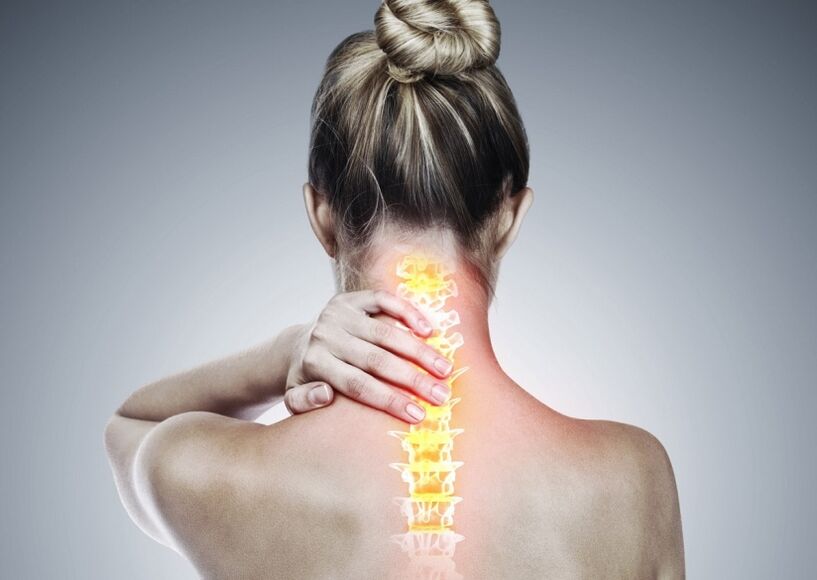
Currently, the effective methods of treatment that allow not only the removal of symptoms but also the restoration of destroyed vertebrae areas, in traditional medicine is almost not.Therefore, it is so important to understand what factors lead to the destruction of the discs, what needs to change in their lifestyle in order to stop the development of osteochondry.And what measures need to be taken in order to address existing changes and begin the spine recovery procedures.
What is osteochondria?How does the disease progress?
Osteochondria is a disease in which the processes of destruction in the part of the spine -kinetic part began to prevail, manifested by back pain, mobility reduction, etc. During the development of this disease, intervertebral hernia, radio, radio (radio).
The intervertebral disk (hereinafter referred to as "disc") is a rubber fabric ring, the fibers of which are woven in a supernatural and underlying vertebra.Due to its special structure, the intervertebral disc protects every vertebra from destruction and also ensures the mobility of the entire spine (twist).
In the center of the intervertebral album there is a multipurpose core that looks like a rubber pillow filled with liquid.In an adult, it consists of 70% of water, as well as carbohydrates that can bind and give water.At the time of the cargo in the corresponding part of the spine, the core gives the water and flatters and after the finish the result takes the previous form.Such a shock pillow allows the spine to open and extinguish up to 80% of the shock load coming to the spine.

Degenerative-diplomatic processes begin more often with a deterioration of the absorption function of the shock of the intervertebral disc.
- Degradation of blood supply to the intervertebral disk.In adults, intervertebral disc food is performed by diffusion: blood is delivered only to the vertebrae and already through them "leaks" in the discs.In the best way, the disc is powered during dynamic loads (for example, walking), since the principle of the pump (outflow of processed liquid when compressed, the flow of nutrients and oxygen when removing the load).Thus, the diet of intervertebral discs is difficult, especially in the conditions of a sedentary lifestyle (nomination).
- Changes to the core of the pulp drive.By deteriorating blood supply, water supply, sugars and amino acids in the core of laminating are disturbed.Because of this, the production of water that connects water suffers.The core is dehydrated, its structure of gel converted to fibrous, the ability to open and extinguish the shots worsens.This increases the load on the fibrous ring and the vertebrae, more likely to be ruled out and injured.
- Changes to the fibrous ring of the intervertebral disc.Due to the leveling of the plastic nucleus, the increased load is found in the fibrous disc disk ring.In conditions of poor blood supply, the fibrous ring loses its power.Spine instability occurs, which can lead to the formation of an intervertebral hernia, in vertebral displacement and damage to the spinal cord or nerve roots.
- Lever.The formation of the intervertebral hernia.As the fiber of the fibrous ring weakens, the polyp nucleus begins to go out, for example, to its intervertebral (disc protrusion).Such a shocking can further lead to the rupture of a fibrous ring and to the formation of a hernia.Read more about the process of forming an intervertebral hernia in a separate article - "Effective treatment of the intervertebral hernia at home".
- Sponge - the destruction of intervertebral joints (vertebrate), the development of osteophytes and the osteogenesis of joints.Along with the formation of the intervertebral hernia in osteochondria, the damage to the intervertebral joints are observed, catastrophic changes in the vertebra (cartilage) and ligaments.
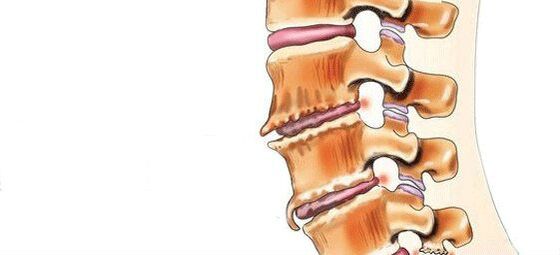
Since the shock function of the intervertebral disc function is not performed, the vertebrae and small intervertebral joints begin to be constantly injured.
Spine instability is also the cause of damage to the cartilage of vertebrae bodies and articular processes.As a result, bone tissue grows, osteophytes appear(From Greek: Osteo - Bone, PHYTO - Plant)- Bone increases.The appearance of osteophytes is widely called the formation of peaks or the deposition of salts.
- Osteophytics can constantly irritate the ligaments of the spine, which gradually leads to their osteogenesis and to restrictions on movements in the affected spine.
- Osteophystics can also injure the nearby soft tissues, the result of which is the accumulation of dead cells in them, in which the body reacts with inflammation (edema).
- The osteophiles on the surfaces of the vertebraes facing the fiber of the intervertebral discs of the fibrous ring, accelerating the formation of a hernia.The osteophytic, which grows towards its intervertebral, enhances the compression of the spinal cord, blood vessels, nerve.
- The development of osteophytes can lead to the wrapper of adjacent vertebrae and the complete loss of mobility in the vertebral section.
Symptoms and signs
Symptoms and signs of osteochondry - back pain!Initially, back pain can occur due to hyperlinks of the posterior muscles trying to concentrate over -moving vertebrae (stage 3), so that the muscles protect the spinal cord in the spine.The spinal cord is the central part of the nervous system, so the body tries to prevent damage (compression, irritation).Then the cause of the pain can already be the vertebrae vertebrae, the protrusion hernia and even a small size.At the time of the appearance of a hernia, a person, as a rule, feels severe pain (this is called cervical or lumbar Lader).

Due to back pain, a person inadvertently seeks to take a position in which the pain is reduced - the so -called, forced positions.At the same time, the spine is in a non -violent position that reduces the discharge capabilities of the discs.This increases their risk of further damage.
As the violations go on the joints, the development of the osteoporosis of the spine, the articular surfaces and the joints, the patient's spine begins to lose mobility.Some and then complete restrictions on movements in the affected spine.
Complications of spine osteochondry
There are several stages of developing complications of spine osteochondal.Their manifestations depend on the section in which the devastating process occurs.
- Rizospulite disc (radioopathy), in which the leeches protruders push the nerve root (a beam of nerve fibers, extending from the spinal cord and then divided into nerves that go into one or the other area of the body).The pain is due to both the mechanical effect of the hernia in the spine and to the addition of inflammation (edema).
- Vascular-brown syndrome, in which the boats are pressured that feed the roots of the spinal cord.It is manifested by reduced movements in the hands (with cervical osteochondria) or lower extremities (with lumbar), as well as loss of sensitivity.With this complication, the work of the internal organs can be developed, in which the affected nerves (urination, sexual function, intestinal work, etc.) can be developed, hypertension can develop and memory wear.Sometimes vascular violation suddenly occurs, with a sharp movement in the affected area of the spine - more often, on the lower back.There is a sharp pain and the sudden weakening of the muscles on the affected side - syndrome "paralytic isshias”.
- Violation of blood supply to spinal cordcaused by the compression of ships that feed the spinal cord.The extreme degree of complications is an ischemic stroke.The result of this complication is reduced movements in the extremes (paralysis, paralysis), loss of sensitivity, deterioration of the work of the internal organs until complete denial.In some cases, this can lead to the patient's death, for example, when renal function is suffering seriously.
Symptoms of the spine of radicals are dependent on the spine:
| Location | Symptoms and signs |
|---|---|
| Cervical, cervical radical | Depending on the level of damage, pain and weakened throat, shoulder, forearm, fingers appear.Muscle weakness in these sections can also be observed. It often joins the neuralgia of the occipital nerves, in which severe pain in the back of the head.Arrhythmia may occur. |
| Rizospasi | It is manifested by pain in the lower back, which is often combined with pain during the sciatic nerve - Ishias, isshiradiculite.The weakness of the leg muscles also develops, a violation of thigh sensitivity, lower legs and legs can occur. |
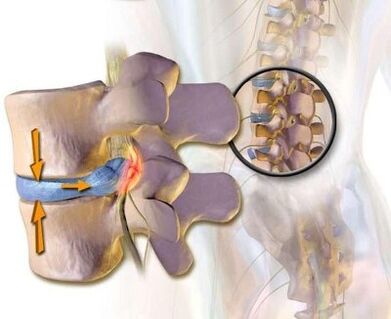
The displacement of vertebral bodies or intervertebral discs with subsequent compression of blood vessels and nerve roots may require urgent surgery.
The reasons for the development of spine osteochondrozi
Osteochondria is called a multifactorial disease - that is, there may be many reasons for its appearance.Here we will distinguish two key factors that gradually lead to the defeat of intervertebral discs and subsequent changes in the spine:
- Worsening of intervertebral disk supplies as well as cleaning their tissues.
- Excessive load on the spine, leading to the accumulation of dead cells in the tissues of the spine.
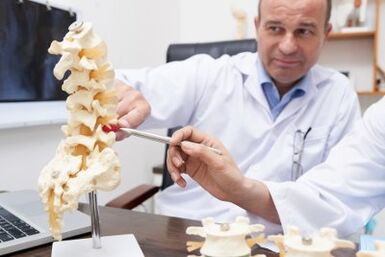
Informing the tissues of intervertebral disc depends on the adequacy of blood flow and the flow of lymph nodes directly on the intervertebral discs, neither blood nor lymphatic vessels are appropriate (which serve the body to cleanse the tissues).The food and cleaning of the disk are indirectly performed, that is, slowly.This is why in this area it does not only appear quicklyNutrient deficiency and starvation of oxygenBut also quicklyAccumulated damaged and dead cellsas well as processed substances.Cleaning the fabrics from the "slag" is essential, otherwise there will be no place for the appearance of new functional cells and then the fabric will gradually lose its function (for example, the core of the disc's rock will stop spring, damping and slowly flattened).
Informing the tissues of intervertebral disc depends on the adequacy of blood flow and lymph node flow.The speed and durability of these processes are affected by the muscle microbial created (mainly) rear muscles during natural stress.In this respect, one of the reasons for the supply and cleansing deficiency is hypotherapy when the rear muscles are relaxed or in static position.
As osteochondria develops, blood supply, lymphatic and venous outflow in the spine may worsen due tomuscle spasm.The body gives a signal to the muscles to keep the vertebrae in a specific position in relation to each other in the affected area.For a long time, excessive muscles have been pushing the boats for a long time, which further exacerbates the situation.
It is obvious to most people that the spine may suffer in the event of an unusual steep weight lifting or when injured, however, spine damage may be daily and not so tangible in the event of a breach of the neuromuscular damping system.Stable microtramids in weak lymph node conditions lead to the accumulation of dead cells, prevent the growth of functional cells and further leads to tissue osteogenesis.
Violation of neuromuscular depreciation as one of the main causes of osteochondicity
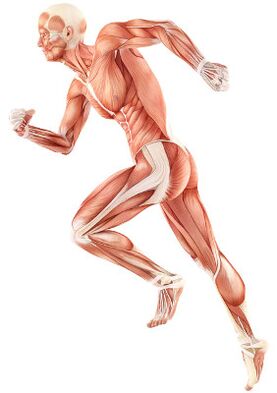
Violation of neuromuscular depreciation as one of the main causes of osteochondrication in order to reduce the load on the spine when walking, lifting weights, etc. The body has an entire system of neuromuscular damping.It is ensured by the function of the body's nervous system and skeletal muscles that interact with an agreement to ensure smooth movements and to erase the loads of bones, joints and, of course, the spine.Thus, most of the shock loads should be extinguished.Also, the muscles of the feet and back are involved in depreciation.If this does not happen (for example, unpleasant high -level shoes do not allow the foot to operate), the intervertebral discs are shocked for which they are not intended.Factors leading to disagreement in the neuromuscular depreciation system are listed below:
- Abuse of attitude- Various types of spine curves that prevent him from breaking, the use of abnormal furniture when working in the office, etc.
- Gait violation, Execution techniques (right when running, transfer weight from the finger to heel).
- Wearing high -speed shoes or without heels, which negatively affect foot damping capabilities.
- Overly loads(playing sports, exhaustive physical work), traumatic joints and spine
- Portliness- Overweight shifts the center of gravity of the body, as well as the adipose tissue complicates blood supply to the muscles, the behavior of nerve impulses.
- Driving to the transportation sitting without depreciation (at a stop that you can open with your feet).
- Disorders of the function of the nervous system, for example, due to the frequent use of painkillers that adversely affect nervous conductivity.
- Kidney disorderDue to excessive formation in the body of decomposition products.This may be related to inadequate physical activity - a prerequisite for the work of the lymphatic system, which is responsible for cleaning tissues from metabolic products and dead cells, as well asLiver diseases, chronic outbreaks of inflammationAnd so on.
Hypotherapy
One of the reasons for extensive osteochondria in recent decades is an epidemic of a sedentary lifestyle.Back muscles and the type in ordinary life are not involved enough and quickly weaken and strong muscles need for the health of the spine that are not overloaded with static intensity but are busy with dynamic work.Back muscles are the fastest weakened with subconscious, which is full of the following consequences:
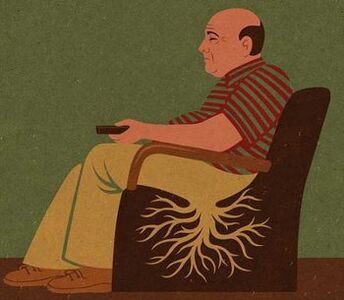
- Inadequate spine support in careless movements, which leads to overloading of intervertebral discs, vertebral displacement and the appearance of intervertebral gardens.
- The deterioration of blood supply to the spine: The dynamic work of the skeletal muscles is a prerequisite for blood flow to any organ, including the spine.As a result of the inadequate function of the back muscles, the devastating changes in the progress of intervertebral discs - cells die of deficiency of nutrients and oxygen.And the dead cells accumulate, interfere with rehabilitation.
- Submission of lymph node and venous outflow flow, which leads to the accumulation of dead cells in the tissues.The work of the skeletal muscles is particularly important for the work of the lymphatic system, as most of its vessels (for example, lymphokilia) have no muscle walls and the "push" of lymph nodes in the blood vessels depends on the work of the skeletal muscles.
4 principles of effective treatment
In order not only the removal of symptoms, but also to address the cause of the development of osteochondination, vertebrae, radicalpastitis and ishias, the following tasks must be resolved:
- Create opportunities for cleaning tissue from dead cells.This is a prerequisite for recovery in order to prevent the further formation of osteophytes and to release the space for tissue regeneration.To do this, restore/enhance the lymph node flow and venous outflow from the affected sections.
- Enhance blood supply to the affected area.
- Improve the tone of all muscles that support the spine.This will allow:
- Create conditions for stimulationownBlood flow and lymph node flow to the spine.
- Reset the operation of the neuromuscular depreciation system, which is necessary for adequate spine support, to avoid new damage.
- Eliminate pain, because this will give a chance:
- Remove the muscles clamps that prevent blood flow from the spine.
- Avoid compulsory positions.
Medication (pharmaceutical) treatment
Today, in the treatment of osteochondry and its complications, medicines of the following groups are used:
- Necapids anti -inflammatory drugs (NSAIDS)- in the form of drugs or injections of drugs.These funds have the ability to reduce pain, reduce inflammation activity.However, the effect of their use does not last long - from several hours to two to three days.Therefore, such funds must be taken for a long time - weeks and sometimes months.At the same time, these drugs negatively affect the mucous membranes of the gastrointestinal tract.Their long reception is filled with the development of gastritis, ulcerative lesions.In addition, they can negatively affect the work of the kidneys, the liver and contribute to the development of hypertension.And, at the same time, these funds do not contribute to cleaning the discs from the dead cells.Therefore, their use is only one way to relieve the symptoms for a while, but not to eliminate the main problem.
- CTEPOID (GOPMONAL) anti -inflammatory drugs.As a rule, they are used for severe and impenetrable pains that accompany hernia, radicals, ishias, etc.Gopmons have the ability to eliminate the manifestations of inflammation (due to the oppression of the immune system).But they also adversely affect the mucous membranes of the stomach and intestines, promote bone calcium rinsing, inhibit the production of their own gopmons.And do not contribute to cleansing the focus of dead cells.
- Papasmolic- Medicines that affect the muscles or nerves that go to the muscles and cause skeletal muscles.These means help relieve muscle clamps for a while, reduce pain and improve blood flow.But at the same time, they do not help cleanse tissues from dead cells.As a result, they do not contribute to the treatment for osteochondria.
- Grant exclusion- The introduction of painkillers and gopmonal agents in the interval between the solid shell of the brain and the perossos covering the vertebrae.It is usually used for severe aches - in the acute period of the intervertebral hernia, with severe radicals, Ishias.Depending on the composition, such injection helps relieve pain for a period of several hours to several days.After the expiry date, manifestations of the disease are refunded because the procedure does not help restore metabolic processes on discs.In addition, when performed, there is a risk of injury to the blood vessels and nerves.
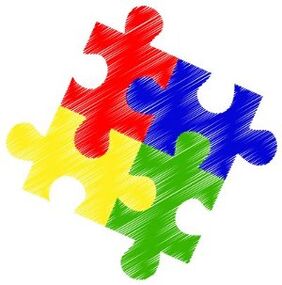
As osteochondria and development of progress complicationsYou must resort to medication more and more often, increase doses.This leads to high financial costs, as well as further deterioration of health due to side effects.
Pharmaceutical therapy, as a rule, is supplemented by immobilizing one or friend of the spine using orthopedic corsets of a variety of stiffness.


























